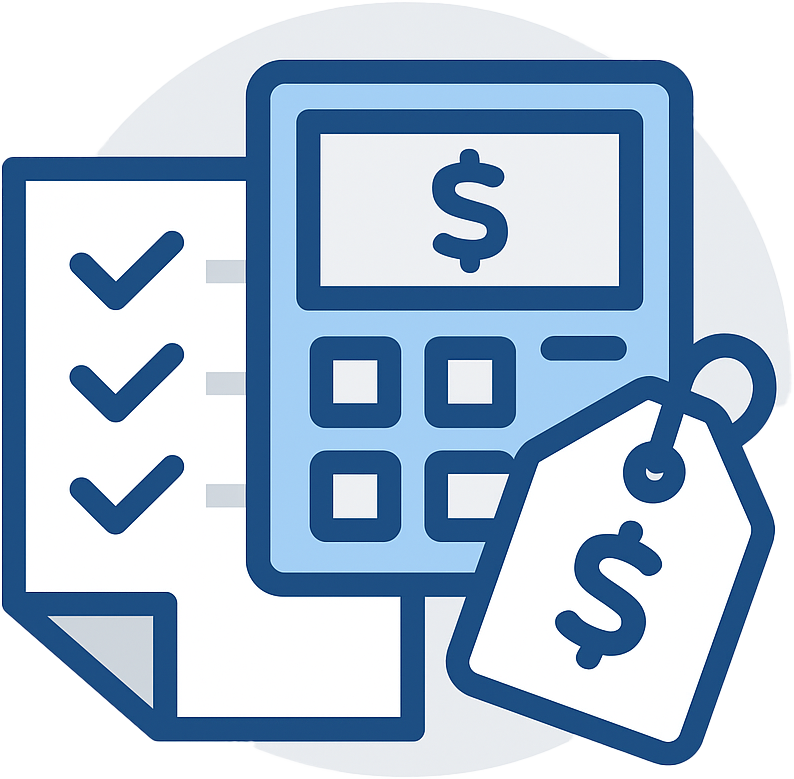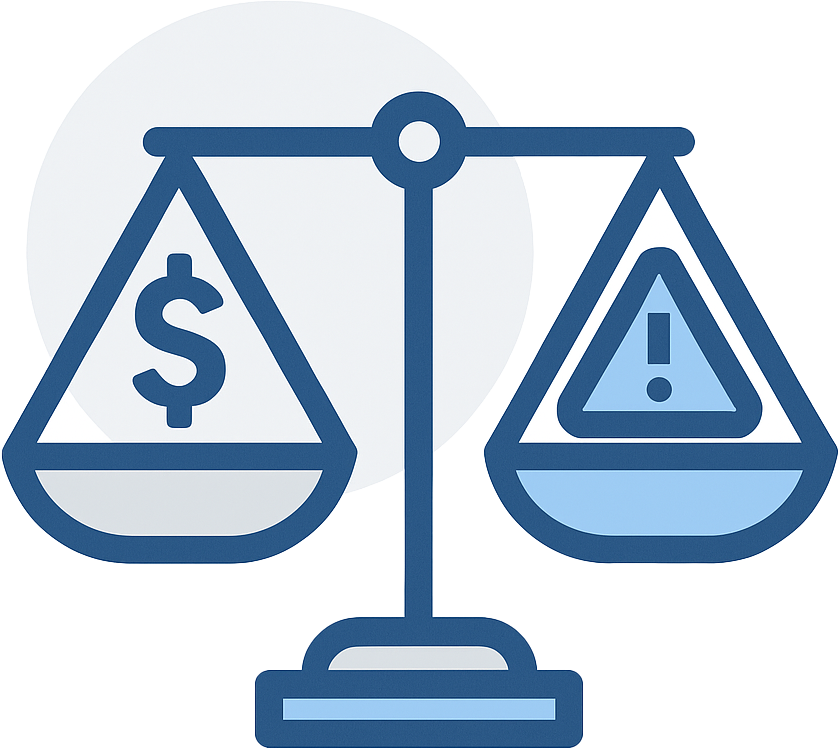Understanding your Discharge Monitoring Report (DMR)... and why getting it wrong can cost you!
If you hold an NPDES permit, chances are you’ve heard the term “DMR” before. But are you 100% clear on what it actually is... or what could happen if you mess it up?
At RMA, we talk with a lot of facility operators who think DMRs are just another formality. But the truth is, your DMRs are some of the most important environmental compliance documents you’ll need to submit. And if they're late, incomplete, or inaccurate, you could be facing serious enforcement action (and no one wants that).
Let’s break down what DMRs are, why they matter far more than most people realize, and how you can stay on top of your reporting without losing your sanity.
And if you need help managing your NPDES compliance, contact us today. We’ve been helping facilities like yours stay out of hot water for decades! Okay, let's jump in.
Table of Contents
What Is a DMR (Discharge Monitoring Report)?
A DMR, or Discharge Monitoring Report, is an official report your facility submits to your state environmental agency (or directly to the EPA in some cases) under your NPDES permit (National Pollutant Discharge Elimination System).
Two steps back. Your NPDES permit is your "water permit" - it's the one that specifies what kind of water can leave your property (stormwater like rain, process water like wash water, or a mix of the two). When that water leaves your site, whether it's through a storm drain in the street or a pipe that flows into a creek, it's called a "discharge". And your NPDES permit also has rules about how "polluted" that water is allowed to be. If you've heard anything about DMRs, there's a good chance you have (or need) an NPDES permit.
Following so far? Okay, so as a part of your NPDES permit, you're often required to submit these DMRs to prove that you're staying within the rules outlined by your permit. The purpose of a DMR is simple: it tells regulators whether your facility is meeting the discharge benchmarks or limits outlined in your permit. It’s your self-reported compliance record, backed by lab-certified data.
Here’s how it works:
- You collect water samples from your permitted outfalls (stormwater, process wastewater, or both).
- You send those samples to a certified lab for analysis.
- The lab tests them for things like metals, nutrients, pH, TSS, or whatever your permit specifies.
- You take those results and enter them into your DMR system, like EPA’s NetDMR or your state’s reporting platform.
That fourth step is where things get tricky. Every state is a little different. In some places you just submit to the EPA using NetDMR. Some states have their own fancy online systems. Some have really crummy online systems. And some... are still using paper forms and snail mail. Need help figuring it out? Reach out, we've got you covered.
But in short - it's a report that helps you monitor your discharges. A Discharge Monitoring Report. DMR. Make sense? Regulators then use that data to compare your results to your permit limits. If your results are within limits, great - you’re in compliance! If they’re not, you may be looking at potential violations or enforcement actions.

Why DMRs Matter (More Than You Think)
It might sound like a simple reporting step, but your DMR carries a lot of weight. Regulators rely on these reports to gauge how well your facility complies with its permit. In many cases, it’s the only “window” they have into your operations outside of periodic site inspections.
That means:
- Submitting late or missing data can trigger a violation.
- A typo or unit conversion mistake can cause reporting errors that ripple into enforcement.
- Incomplete explanations for exceedances can make regulators question your diligence.
We’ve seen clients get cited for simple mistakes that could’ve been avoided with a second set of eyes on their reports. The good news? With the right systems and review process, DMRs can actually work for you, not against you.
How DMRs Can Actually Help You
Nobody wakes up excited about submitting DMRs. It's a hassle, one more thing to do in your probably already too-busy day. But believe it or not, your DMRs can be one of the most valuable compliance tools you have.
When tracked properly, your DMR data becomes a performance dashboard for your facility. Over time, it can reveal trends, things like recurring high metals, elevated pH, or spikes after heavy rain that may indicate leaks, poor housekeeping, or infrastructure issues.
They're clues that help you to become an environmental detective at your facility. Reporting high levels of oil in your samples? Hmmm... where do we keep the oil on site? Is a drum busted? Is someone's car leaking in the parking lot? Did that concrete containment wall develop a crack? It's up to you to find out!
And on the flip side, improving DMR results can demonstrate progress and diligence - something regulators always appreciate seeing. In fact, a strong DMR record can help you defend your compliance program if you ever do receive a notice of violation.
Your DMR data can even support other environmental reporting programs, like:
- TRI (Toxic Release Inventory) reporting
- Stormwater Pollution Prevention Plan (SWPPP) updates
- Internal EHS audits or customer-driven ESG requirements
- And more!
DMRs are great environmental data. And you can't have a strong environmental program without environmental data. They tell a story about your facility. Learn from that story and use them to improve, don't just stuff them in a drawer. 
Common DMR Mistakes We See (and How to Avoid Them)
At RMA, we review a lot of DMRs, and we see the same issues pop up again and again:
- Submitting late (even by a day!)
- Entering lab results with the wrong units
- Forgetting to provide comments or explanations for exceedances
- Copying data incorrectly between systems
- Missing required parameters altogether
And the biggest mistake of all? Treating your DMR like a chore instead of a compliance opportunity.
When facilities ignore the trends in their data, they miss the chance to fix small problems before they turn into big ones. A proactive approach to DMRs can reduce risk, save money, and build a stronger relationship with regulators.
If you’re not sure whether your reporting system is airtight, reach out to us. We can review your DMRs, spot errors before submission, submit them for you correctly, identify where your exceedances are coming from, and help you build a streamlined reporting process that works (and that you can actually understand!).
Public Data: Yes, Everyone Can See Your DMRs
Here’s something many facilities don’t realize: once you submit a DMR through systems like NetDMR, your data becomes public record. That means anyone - regulators, environmental groups, even competitors - can look it up.
Your DMR results represent your facility’s environmental performance to the world. Accurate, on-time reports show that your organization takes compliance seriously. Mistakes or patterns of exceedances can send a very different message.
So... if you're not using your DMRs to benefit you, someone else might use them against you. Let's avoid that. This transparency is one more reason to stay vigilant. Consistent, accurate reporting builds trust, not just with regulators, but with your community and customers, too.

The Bottom Line: Treat DMRs Like They Matter (Because They Do)
DMRs are your facility’s report card, your compliance fingerprint, and your chance to prove that you’re doing things the right way. Every number you submit tells a story about how well your operation protects the environment and manages risk.
We know firsthand that it’s not always easy to stay on top of sampling schedules, lab reports, and submission deadlines, especially when you’re already wearing a dozen other hats. But missing a single deadline or entering data incorrectly can create problems that snowball fast. The good news? You don’t have to manage all of that on your own.
At RMA, we’ve spent decades helping businesses like yours navigate the ins and outs of environmental compliance. We help you understand what your data means, ensure your DMRs are accurate and complete, and make sure every submission goes out on time. More importantly, we help you turn that data into insight - so you can actually catch issues early, avoid costly violations, and build a stronger compliance program year after year.
We’re here to make the process simpler, faster, and far less stressful. And at the end of the day, we want you to have the peace of mind that comes from knowing your reporting is done right. If you’re ready to stop worrying about DMRs and start feeling confident in your compliance, contact us today.













